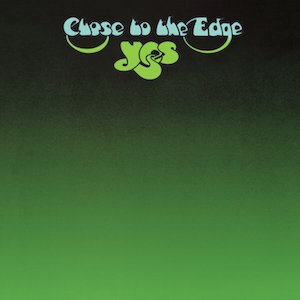Rick Wakeman is widely regarded as one of the most influential keyboardists in progressive rock, and his association with Yes played a crucial role in shaping the band’s unmistakable sound. Joining the group in 1971, Wakeman brought a classically trained background and a mastery of various keyboard instruments, including the Moog synthesizer, Mellotron, and Hammond organ. His technical prowess and creative approach to layering lush, atmospheric textures helped push Yes beyond the boundaries of traditional rock, cementing their place as pioneers of the progressive genre.
Wakeman’s Entry into Yes
Rick Wakeman officially joined Yes in 1971, making his debut on the album Fragile. At the time, the band was already beginning to explore more complex musical landscapes, but Wakeman’s arrival marked a turning point in their evolution. His classical training and proficiency with multiple keyboard instruments opened new possibilities for the band’s sound, allowing Yes to push the boundaries of progressive rock even further.
With Fragile, Wakeman’s intricate arrangements and use of the Moog synthesizer, Mellotron, and grand piano gave the album a more symphonic and expansive feel. Tracks like “Roundabout” showcased his ability to blend technical skill with a strong melodic sense, elevating Yes’s music to new heights. Wakeman’s influence was immediate—his presence allowed the band to explore more ambitious compositions, making their sound more sophisticated and layered, which would define their direction throughout the 1970s.
Signature Keyboard Techniques
Rick Wakeman’s keyboard techniques were a key factor in shaping Yes’s signature sound, bringing a new level of sophistication to the band’s compositions. One of his most defining contributions was his pioneering use of a wide array of keyboard instruments, including the Moog synthesizer, Mellotron, and Hammond organ. Each instrument added a distinct texture to Yes’s music, from the warm analog tones of the Moog to the orchestral grandeur of the Mellotron, which he used to create sweeping, symphonic backdrops that were previously unheard of in rock music.
Wakeman was also a master of layering multiple keyboard sounds, building dense, atmospheric textures that gave Yes’s music its rich, full-bodied character. His ability to stack harmonies and weave complex chord progressions added a sense of depth and movement, enhancing the overall complexity of the band’s arrangements. For instance, in “Close to the Edge,” Wakeman’s use of sustained chords on the Mellotron underpins the song’s epic scope, while his precise piano runs and Moog embellishments bring moments of clarity and brightness to the intricate mix.
His soloing style further distinguished him from other rock keyboardists. Wakeman often combined classical influences with improvisational flair, delivering virtuosic, fluid solos that were both technically impressive and melodically engaging. His solos were not just displays of technical prowess, but integral parts of the song’s structure, helping to propel tracks like “Heart of the Sunrise” and “Siberian Khatru” forward with intensity and drama. Wakeman’s innovative techniques turned the keyboards into a lead instrument within Yes’s complex soundscapes, setting a new standard for progressive rock musicianship.
Analysis of Key Tracks
Rick Wakeman’s keyboard work was instrumental in defining some of Yes’s most iconic tracks, where his contributions were critical in shaping the band’s progressive sound. Below, we explore his role in three standout tracks that highlight his innovative approach.
1. “Roundabout” (Fragile, 1971)
“Roundabout” is one of Yes’s most recognizable tracks, and Wakeman’s keyboards play a pivotal role in its dynamic structure. His use of the Hammond organ adds a rich, driving texture during the song’s verses, while his dazzling Moog synthesizer solo in the instrumental break provides one of the song’s most memorable moments. Wakeman’s precise and melodic approach elevates the energy of the track, weaving seamlessly with Steve Howe’s guitar riffs and Chris Squire’s bass lines. The layered keyboards bring depth to the arrangement, making “Roundabout” both complex and accessible, and his influence is key to its lasting appeal.
2. “Close to the Edge” (Close to the Edge, 1972)
On the epic title track “Close to the Edge,” Wakeman’s keyboard work is central to the song’s sprawling, multi-part structure. The track opens with an atmospheric, almost chaotic introduction, where Wakeman’s Mellotron and synthesizers swirl in a dense, textured soundscape, setting the stage for the song’s journey. His use of the church organ later in the piece creates a majestic, almost symphonic climax, contrasting with the frenetic energy of earlier sections.
Throughout the 18-minute composition, Wakeman’s keyboards act as both a melodic and harmonic foundation, interacting with the other instruments to create a sense of ebb and flow. His ability to shift between bombastic and serene moments enhances the song’s dramatic arc, making “Close to the Edge” a quintessential example of his ability to elevate progressive rock to symphonic heights.
3. “Heart of the Sunrise” (Fragile, 1971)
In “Heart of the Sunrise,” Wakeman’s keyboards provide both power and subtlety. The track features rapid, syncopated bass and drum patterns, and Wakeman’s keys respond with a mix of Mellotron chords and sharp synthesizer stabs, adding both rhythmic and harmonic complexity. His intricate piano lines in the quieter sections of the song lend an almost classical touch, providing contrast to the heavier, more aggressive parts. This interplay between calm and intensity is a hallmark of Yes’s sound, and Wakeman’s ability to shift gears smoothly adds emotional depth to the track, making it one of the band’s most dramatic pieces.
Through his contributions to these key tracks, Wakeman’s keyboards were far more than accompaniment—they were essential in creating the richly layered and dynamic sound that made Yes a progressive rock powerhouse. His ability to craft atmospheres, melodic counterpoints, and powerful solos ensured that his role was not only supportive but central to the band’s greatest musical achievements.
Influence on Progressive Rock
Rick Wakeman’s work with Yes not only elevated the band’s sound but also had a profound influence on the broader development of progressive rock. His keyboard innovations pushed the genre into new territory, helping to expand the possibilities of what rock music could encompass. By integrating classical influences with cutting-edge technology, Wakeman redefined the role of the keyboardist in rock, transforming keyboards from background instruments into a lead presence within complex, multi-layered compositions.
Wakeman’s pioneering use of synthesizers, particularly the Moog, along with the Mellotron and Hammond organ, set a standard for keyboardists in the progressive rock world. He showed that keyboards could be used to create sweeping orchestral textures as well as intricate, virtuosic solos, bridging the gap between rock, classical, and electronic music. Tracks like “Close to the Edge” and “Heart of the Sunrise” demonstrated how keyboards could carry both melodic and harmonic weight, driving the music forward with as much impact as the guitar or vocals. His ability to seamlessly blend atmospheric soundscapes with precise, classically-influenced playing was unique, helping to shape the sonic identity of progressive rock in the 1970s.
Comparisons
When compared to other prog keyboardists of the era, Wakeman stood out for his technical mastery and versatility. Keith Emerson of Emerson, Lake & Palmer and Tony Banks of Genesis were also key figures in the progressive rock scene, but Wakeman’s distinct classical touch and dramatic flair set him apart. While Emerson’s performances leaned heavily on showmanship and experimentation, and Banks favored more understated, textural approaches, Wakeman combined both extremes—delivering grand, symphonic flourishes while maintaining a melodic clarity that kept the music grounded. This balance allowed Wakeman to leave a distinct mark not only on Yes’s catalog but on the genre as a whole.
Wakeman’s legacy continues to influence modern progressive rock and beyond. Bands like Dream Theater, Spock’s Beard, and Porcupine Tree have all drawn on the expansive, keyboard-driven soundscapes that Wakeman helped pioneer. His ability to fuse classical music theory with rock sensibilities laid a foundation for future generations of keyboardists, who continue to experiment with synthesizers and digital instruments while building on Wakeman’s pioneering work. His lasting impact can be heard in the progressive metal subgenre as well, where keyboardists often emulate his use of intricate solos and atmospheric layers to match the intensity of heavy guitars and complex rhythms.
Wakeman’s Legacy in Yes

Rick Wakeman’s long-term influence on Yes’s sound is undeniable, spanning multiple albums and shaping the band’s evolution over several decades. His contributions were key to some of Yes’s most iconic works, particularly during the 1970s, when the band was at the height of its creative and commercial success. Wakeman’s keyboard mastery brought a symphonic grandeur and complexity to Yes’s music that became a defining feature of their progressive rock identity.
Wakeman’s initial tenure with Yes began with Fragile (1971) and continued through Close to the Edge (1972), Tales from Topographic Oceans (1973), and Going for the One (1977). Each of these albums showcased his ability to elevate the band’s sound, with his intricate arrangements and pioneering use of synthesizers adding depth and atmosphere. Tracks like “And You and I” and “Awaken” are prime examples of how Wakeman’s keyboards provided both structural and emotional weight, allowing Yes to explore more expansive, ambitious compositions.
Despite his pivotal role, Wakeman’s relationship with the band was marked by several periods of departure and return. He first left after Tales from Topographic Oceans, citing creative differences over the album’s sprawling structure. His absence was felt on Relayer (1974), where the band pursued a more angular, jazz-influenced direction. Though the album was well-received, fans and critics alike noted the shift in sound without Wakeman’s lush, orchestral keyboards. His return for Going for the One brought back a more familiar blend of classical and rock elements, leading to some of the band’s most celebrated work, including the epic “Awaken,” which stands as a testament to Wakeman’s ability to craft immersive, symphonic soundscapes.
Shifts in Sounds
Wakeman would leave and rejoin Yes several more times over the years, with each departure and return marking distinct shifts in the band’s sound. His absence during albums like Drama (1980) and 90125 (1983) coincided with Yes adopting a more streamlined, pop-oriented approach, reflecting the evolving music industry of the 1980s. Though commercially successful, these periods lacked the progressive depth and complexity that Wakeman’s keyboards had previously provided. His eventual return in the 1990s, particularly on Keys to Ascension (1996), reaffirmed the band’s progressive roots and rekindled the intricate interplay between his keyboards and the rest of the group.
In the broader context of Yes’s history, Wakeman’s presence has often been seen as the defining factor in the band’s most creative and adventurous phases. His ability to blend technical proficiency with emotional resonance allowed Yes to push the boundaries of progressive rock while maintaining a melodic core. Without him, the band tended toward more straightforward, pop-inflected sounds, while his returns were consistently marked by a revival of the grand, expansive style that first made Yes famous.
Closing Thoughts
Rick Wakeman’s keyboard work remains a cornerstone of Yes’s iconic sound, playing a pivotal role in the band’s most celebrated albums and tracks. His innovative use of synthesizers, Mellotron, and other keyboard instruments redefined what was possible within the framework of rock music, helping to shape Yes’s distinct blend of symphonic grandeur and technical precision. From the intricate, layered textures of Fragile to the epic arrangements of Close to the Edge, Wakeman’s contributions were essential in pushing Yes—and progressive rock as a whole—into new realms of musical complexity and creativity.
Beyond Yes, Wakeman’s influence on the progressive rock genre cannot be overstated. His ability to blend classical sensibilities with cutting-edge technology set a new standard for keyboardists in rock, inspiring generations of musicians to explore the limitless possibilities of the instrument. Whether he was crafting atmospheric backdrops, delivering virtuosic solos, or driving the melodic core of a track, Wakeman’s keyboards consistently elevated Yes’s music to greater heights.
